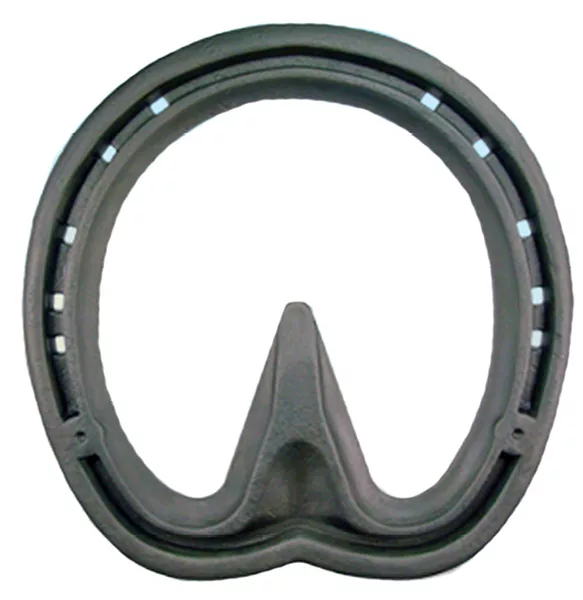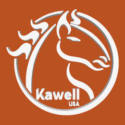Farrier Takeaways
A healthy frog is absolutely critical before recruiting it in active weight bearing.
Placing a wooden handle under the frog and lifting the contralateral leg will test whether a horse can tolerate positive pressure.
If the horse is heavy or a hard worker, a spider plate might be a better choice to avoid bending or broken welds.
When Burney Chapman reintroduced the heart bar, it revolutionized equine hoof-care. Countless horses have survived the scourge of laminitis and founder as a result of the work put forth by the late Lubbock, Texas, shoer.
Although heart bars forever will be linked to laminitis management, they also offer a great benefit for some horses with hoof wounds. Yet, as Chapman reminded hoof-care professionals at the 1984 American Association of Equine Practitioners Convention, “There are many more wrong ways than right ways to use it.”
It was with that spirit that farrier and Hall Of Fame equine veterinarian Hans Castelijns discussed the “Appropriate Use of the Heart Bar When Dealing With Hoof Wounds” at the 2016 International Hoof-Care Summit in Cincinnati, Ohio.
“Many years ago,” he says, “I heard from [Welsh farrier] Grant Moon that you can use heart bears in three ways, as far as the frog plate is concerned — positive pressure, neutral pressure and negative pressure.”
What are these pressures?
Positive pressure. “When the shoe is ready to be nailed on to the trimmed foot, the frog plate makes contact with the frog before the heels of the shoe come in contact with the heels,” Castelijns says. “When nailing the shoe on, the frog is already actively engaged into weight-bearing.”
Positive frog pressure, Castelijns says, is preferred when treating hoof-wall defects such as quarter cracks, laminitis and some hoof wounds because it unloads the affected parts of the hoof wall by recruiting the frog in active weight-bearing.
It’s critical to have a healthy frog before applying a heart bar in this manner.
“If you have a thrushy frog with a cleft in which you can put a tongue depressor halfway inward between the bulbs,” he says, “then it is obvious that this is not going to work.”
The Cortona, Italy, farrier and vet ensures that the horse can tolerate the positive pressure before going forward with the application.

“If I’m going to use a hard support system like a heart bar or a strong silicone or hard material, I like to do a test,” he says. “I take a wooden handle (Figure 1), place it under the frog and have the other foot lifted up. If the horse is perfectly all right with the heels off the ground and doesn’t object to standing on the wooden handle, then I’m pretty sure I’m not going to run into troubles if I put positive pressure on it.”
When hot fitting a shoe with positive frog pressure, some considerations are in order.
“The shoe should be fitted hot before the frog plate is applied to the shoe at the desired depth,” he says. “If the frog plate is already fitted to the shoe, the back part of the shoe can be cooled in water before hot fitting. Otherwise, the early frog contact will be partially burnt away, resulting in a heart bar with neutral pressure.”
Neutral pressure. “The heels of the shoe and the frog plate make contact simultaneously with the heels and the frog of the foot when presenting the heart bar onto the trimmed foot,” Castelijns says.
Neutral pressure is used when it’s necessary to widen the ground surface of the back of the shoe without overloading weak or underrun heels.
Negative pressure. This technique avoids ground contact with the frog, which can be beneficial when a horse has pain in the navicular bursa.
If you have an inflamed bursa, that horse is not going to like positive pressure …
“Above the frog is the digital cushion,” he points out. “Above that is the deep digital flexor tendon, the navicular bursa and the navicular bone. So, if you have an inflamed bursa, that horse is not going to like positive pressure.”
While he admits that it’s “extremely hard to play around with the exact pressure you want,” Castelijns says there are definite benefits to forging customized heart bars.
“There are two advantages for me — I can fit the shoe the way I want and then I can arch weld my frog plate at exactly the pitch, tilt, depth and orientation I want,” he says. “I can spot weld it, check it on the horse and adjust it. And, sometimes it’s a real subtle thing.”
In some cases, though, a heart bar is not the best choice.
“Some horses are so heavy that if you don’t make the shoe really strong, sometimes they bend it a bit inward,” he says. “Then the pitch changes, and of course, you have to get the orientation right.”
It might be necessary to consider a spider plate for these types of horses.
“It is nothing but a frog plate with two little arms to reinforce it and to stabilize it so working horses won’t be able to move it,” Castelijns says. “Then of course, it is easy for a spider plate to hold in silicone because there is much more material to adhere to.”
Depending on the horse and your objective — positive, neutral or negative — you might find that some plates could take some time.

“Paul Hellmeier is a pretty good farrier in Germany,” Castelijns says. “Look at how much trouble he had to go through with a ready-made to get the depth right (Figure 2). The yellow line is the frog plate’s depth and the white lines are the heel of the shoe. Because this horse had a fairly prominent frog, he had to make quite a few adjustments.”
Anatomy Lesson
Before even considering the application of a heart bar, it’s critical to understand anatomy. Castelijns reviewed a number of important areas to consider.
Bars. “The bars are extremely important. They keep the heels out. Since the hoof of the horse doesn’t have the absorbing possibility of the two claws of the cow, the flexibility was built in by interrupting — if we want to describe it that way — the continuity of the walls in the back part of the foot, as well as having the digital cushion and the frog, which of course is highly elastic. Bars also have laminae and are actually weight-bearing wall.”
Navicular bone. “The navicular bone rides up and down over the keratinized crests that are the inside of your collateral commissures of the frog. That’s why you often see on radiographs that there are little partial fractures there on the navicular bone.”
Three areas of function. It’s important to consider that there are three areas of function in the equine foot.
“The front of the foot is enormously strong, with most of the bone in the frontal third,” Castelijns says. “The hoof wall is very strong also, particularly the distal part because it’s the oldest wall. It’s exactly made for pushing off, and there is very little elasticity in it.”
The second area of function is motion, which can be found in the center of the foot.
“We have the distal phalanx, or coffin bone, the intermedial phalanx, or P2, and then we have the insertion of the deep digital flexor tendon,” he says. “There is little material there under the tip of the frog. One of the things we all agree on is even if we use positive pressure on a frog plate — even if the life of the horse depends on it, for example in laminitis — we have to recruit something else so that the laminae can be relieved from weight-bearing. We should be cautious when putting it there.”
It’s important, as well, to recognize where the frog plate should not extend.
“When you fit the frog plate, it is not easy on a living animal’s hoof, because you have to get the depth right and also the length,” Castelijns says. “You don’t want to go farther forward than the yellow line (Figure 3).”

While the front has very little elasticity, the opposite is true in the back of the foot.
“It’s made like a spring, full of flexibility,” he says. “What is the highest movement range in the heels? It’s not side-to-side. That’s when it’s shod on a steel shoe. It’s actually alternately up and down. We can actually move a hoof that is not nailed to a shoe. Actually, when we use an extension device to measure it, usually bare feet go a degree more in lateral or medial elevation than it does when they have a rigid shoe on.”

Wounds And Heart Bars
Castelijns was called in to treat a Standardbred with a wound to the medial heel of its right hind foot (Figures 4a and 4b). The pressure was on because the horse was bound for the yearling sale in just 5 to 6 weeks.
“You can imagine how happy the owner was that this happened,” he says. “Nobody is going to buy this one.”
Castelijns advises the removal of all keratinized material from behind the wound.
“You don’t want anything from the horny part behind the wound to touch,” he says, “so that there is no independent movement.”

An 18x6 trotting wheel shoe (Figure 5) was applied with a “well-fitted frog plate,” Castelijns says. Despite the damage, the hoof growth resumed normally.

“The epidermal cells of the laminae make daughter cells, which go into apoptosis — programmed death — and they become horny cells,” he explains. “The moment you rip something off, the laminar corium immediately produces a lot more daughter cells. It’s amazing how quickly those laminae keratinize, so within a few days, you have this (Figure 6).”
Not all wounds can be caught early, though. Will that make a difference?


“Even if you get there a little later (Figure 7), it will still work,” Castelijns says. “You take everything off, even if you make it bleed a little bit (Figure 8). You take off as much as you can. Put a little heart bar on there (Figure 9), disinfect it and keep it quiet, and you will get a much better coronary band (Figure 10).”


Heart bars often are used when wounds are created in the removal of keratoma, a benign tumor.
In his work as a vet, Castelijns notes that not all keratomas are obvious when looking at radiographs.
“If you have a beautiful keratoma that is off-center and it’s half-round, then you can be pretty sure it’s a keratoma,” he says. “There are a lot of dubious ones, though. Take a tangential radiograph (Figure 11). If you see a double sclerotic line [indicated by the arrows], then you can bet that it is absolutely a keratoma. It’s not described in literature, so remember this little trick.”


After removing a portion of the dorsal wall in keratoma surgery, Castelijns wants to make sure the back part of the hoof or the frog is recruited into weight-bearing.
“Sometimes it’s enough to do a nice frog plate (Figure 12),” he says. “Sometimes you can add more material or more support (Figure 13), such as a spider plate, as I mentioned earlier.”

Although it might be true that there are more wrong ways to use a heart bar, there are plenty of horses that are benefitting from the right ways.








